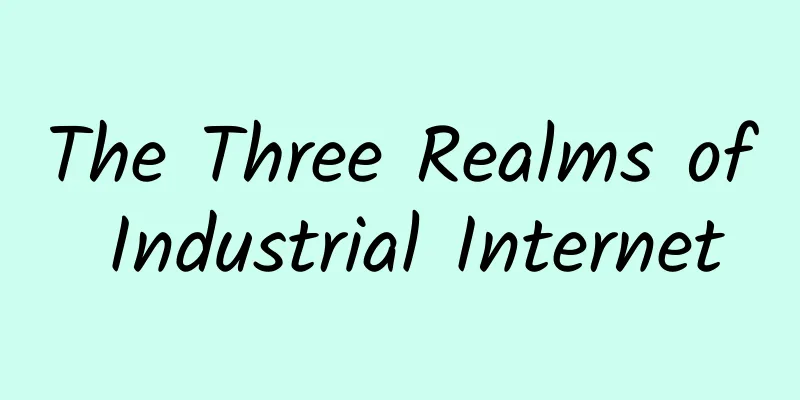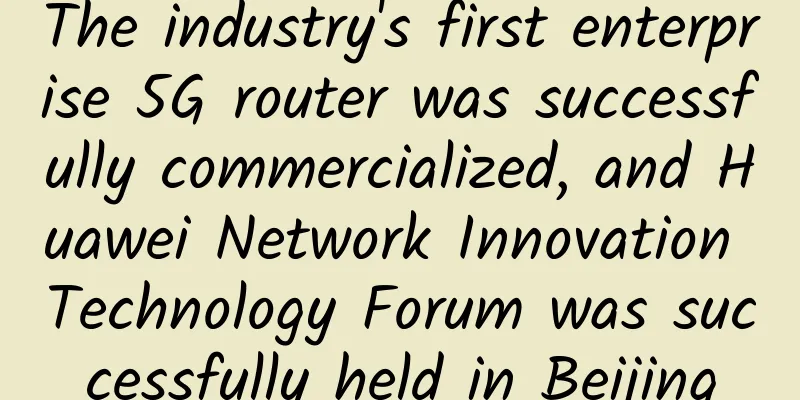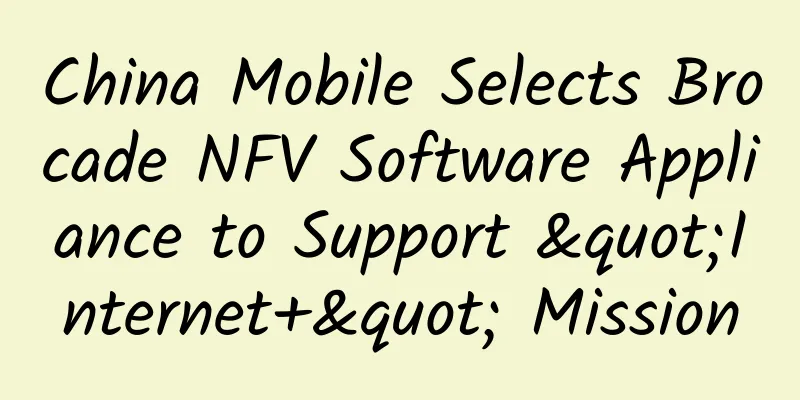The Three Realms of Industrial Internet

|
The Industrial Internet platform is now very popular and has officially been included in the government work report. The Industrial Internet has also become a part of the new infrastructure. Empowering the industry has become an important mission of the Industrial Internet platform. However, these seem to be the one-way intentions of the government and the builders of the Industrial Internet platform: perhaps it will take more time to prove the value of its independent empowerment. Quiet Made in Japan When I attended the China-Japan Intelligent Manufacturing and Industrial Internet Conference three months ago, the comparison of participants from both sides was quite interesting. The Japanese companies attending were mainly Mitsubishi, NEC, Omron, Toshiba, etc. This is not surprising, as they are mainly from the information and automation solution teams. They have a long tradition of serving the industry. However, the composition of the Chinese team is more complex, including ICT manufacturers, machinery manufacturers and home appliance manufacturers. Needless to say, they all have one thing in common: industrial Internet platform suppliers. This confrontation made the Japanese delegation very confused. After dealing with China for so many years, they felt that China had suddenly replaced a group of new players in the field of smart manufacturing and industrial Internet, which made them very uncomfortable. In Japan, these industrial Internet service providers are closely tied to user companies, often doing internal IoT transformation for each company. For example, Fuji Machinery, a company that produces electronic surface mount SMT machines, occupies almost 30% of the global market; and its modular combination machine tools account for 70% of Toyota's similar supply products. It is carefully building its own industrial cloud NEXIM, which, on the one hand, forms a global insight into the manufacturing process based on data; on the other hand, it provides users with more data services around the machine. Figure 1 Fuji Machinery's industrial cloud platform When I visited this factory in October last year, I was shocked by the in-depth modeling of their digital twin technology. Neither its supplier Toshiba nor Fuji Machinery itself has ever thought about empowering the industry. The two companies honestly followed a project. It can be said that this is just an upgrade based on the Internet of Things and the value of data. That's all. If it were in China, two similar companies would probably sing the "Song of the Industrial Internet Platform" to empower the industry. In Japan, they are really concentrating on doing such a "machine + IoT" thing. I call this phenomenon "quiet Japanese manufacturing." It is like China's enthusiastic promotion of "intelligent manufacturing and industrial Internet." Will Japan think that its Chinese neighbor is "too noisy?" Japanese machinery equipment manufacturers, whether it is FANUC Robotics, or machine tool manufacturers such as Okuma and Mazak, have shown a more focused value mining of mechanical products. The Industrial Internet is just a means to make machines more efficient. Japanese manufacturers give people the impression that they are more interested in adding value to their own machines than in building an industrial Internet platform for the industry. The Three Realms of Industrial Internet Industrial Internet is a good means to promote enterprise digitalization. It combines the value of IoT, data analysis and IT, making machines very efficient and allowing data value to flourish. From a historical perspective, the process of industrial use of IT technology to upgrade and transform information and digitalization can be roughly divided into three stages: the internalization of enterprise business processes, the externalization stage of realizing integrated manufacturing services, and the platform plug-in stage of empowering the industry. Figure 2 Three stages of digitalization The first to go on the road was enterprise informatization. Internalization is the inherent demand of enterprises for business connectivity, connecting business processes through IT. The first appearance of the financial system was at General Electric in the United States. Subsequently, various information systems were widely used in various departments of enterprises. During this period, a large number of isolated islands were also created, but informatization is basically a natural result of the industrialization process. In China, the degree of industrialization development is not sufficient, and informatization is forcibly grafted onto industrialization, which is the well-known "integration of industrialization and informationization". After ten years of cultivation, the integration of industrialization and informationization has been widely used, deeply rooted in the hearts of the people, and has also formed its own management standards. However, these in-depth works seem to be disrupted by the sweeping industrial Internet. Externalization is the process of expanding the value chain of an enterprise around products to the user end. It includes both the expansion of the supply chain and the transformation of manufacturing to service-oriented, achieving "product-service integration". For complex product systems CoPS (Complex Product System), achieving high-value services is often more applicable. The first to create this model was the British Rolls-Royce engine. In the late 1990s, this approach was still a new secret weapon. This is a brand-new model based on remote services, which makes GE and Pratt & Whitney engines very passive. The book "The Battle between Boeing and Airbus" once described this dramatic scene. When Singapore Airlines purchased Boeing 777 aircraft in 1997, Pratt & Whitney lost Singapore Airlines, a die-hard customer, which insisted on using Rolls-Royce engines - airlines often decide which engine to choose, not aircraft manufacturers. Pratt & Whitney concluded that the discount given by Rolls-Royce engines might be 100%, because even if Pratt & Whitney offered an 85% discount, it could not win back Singapore Airlines. GE also lost a loyal and important customer like All Japan Airlines in the Boeing 787. This "externalization strategy" has strengthened the application of IT technology by enterprises and greatly stretched the service value chain. The plug-in is to provide extensive support for the digitalization process of the entire industry, especially for small and medium-sized enterprises. This requires a universal enabling platform, which requires modularization, standardization and universal technology. This is a huge challenge to the traditional project system, presenting completely different characteristics. The distinct industry gap and the ever-changing processes of enterprises are all stretched for the platform. Most importantly, its business logic will also undergo major changes. An industrial enterprise needs to appear as an operator this time. Sometimes it is difficult to understand what kind of value a cross-industry platform can really bring to companies in other industries? An industrial Internet platform for construction machinery is connected to many sewing machines. How much value is this? Many domestic manufacturing companies are enjoying this road. However, using big data analysis to tinker with the machines in your own factory may not necessarily optimize other people's factories. In different factories, even the same machine will present different results due to different processes and procedures. It is difficult for the platform to take care of such personalized changes. If you confuse internalization, externalization and plug-in and do the same thing, you will suffer a great loss. The Japanese have spent a lot of effort on externalization, but have been reluctant to use it for "externalization". Hitachi, NEC, and Toshiba's solutions are actively explored and applied in the manufacturing industry, but few people mention "empowering the industry". As steady industrial veterans, the Japanese will never use PPT to do business. In fact, the Industrial Internet is also an eclectic technology choice. Enterprises can selectively achieve the three different levels of internalization, externalization and plug-in. GE's development ideas for the Industrial Internet are GE for GE, GE for Customer, and GE for World, which also present three different stages, which can basically be regarded as "internalization, externalization, and plug-in". The first and second stages are relatively easy to control, but for the third stage, every overly enthusiastic company needs to think more and carefully consider. A Path We Can Learn from Germany Industry 4.0 is an opportunity for German companies to re-form a national brand group with new rules. Judging from Germany's practice, the German manufacturing industry has no intention of seriously distinguishing the difference between Industry 4.0 and the Industrial Internet. Everything revolves around the ultimate efficiency of machines and the value extraction of data. The development of the Industrial Internet platform is the same. The most representative is the German ADMOS Alliance Organization. This is an industrial Internet of Things platform for machinery manufacturers and factory engineering departments, providing adaptive open manufacturing solutions (ADAptive Manufacturing Open Solutions). The initiator of ADAMOS is a Softeware AG, which has united four mechanical manufacturing and engineering technology companies, including machine tool manufacturer DMG Mori Seiki, automotive painting equipment Dürr, optoelectronic device manufacturer Zeiss, and SMT manufacturer ASM, to establish a strategic alliance of mechanical engineering and information technology. ADAMOS bundles the knowledge of mechanical engineering, production and information technology together and is committed to establishing global standards for the industry. DMG MORI SEIKI Machine Tools provides CELOS application, which provides users with continuous management, document viewing and display functions of task orders, processing processes and machine tool data. CELOS integrates the workshop with the company's high-level organization to provide services for continuous digitalization and paperless production. It can be used on platforms such as ADAMOS, and at the same time, the machine tool manufacturer itself can also provide services to user companies. Figure 3 Industrial APP Factory Alliance Similarly, the LOXEO industrial app developed by coating giant Dürr and its partner Schenck, and Tapio, a digital platform for the wood processing industry by German woodworking machinery group HOMAG, are also placed on this platform. For ADAMOS, every machine manufacturer has data and IT ownership, and they can obtain industrial Internet hardware and software solutions for machines from the same source. Behind this is the fifty years of underlying IT experience of Software AG. This is a mature system software supplier in Europe. It has many different business process management software, including the prestigious stream analysis platform Apama system, which can provide complex event processing engines to support digital transformation from workshop to customer interaction. Even so, in order to obtain the platform provider qualification of the industrial Internet, Software acquired Cumulocity, an IoT manufacturer derived from Nokia Siemens Networks, and Zementis, a startup company for machine learning and data science. With these foundations, Software has the confidence to open its arms and launch the concept of "APP Factory Alliance" to cooperate with other machine manufacturers. The German way of forming groups is the most worthy way for China to learn from. Of course, this is probably the most difficult. One strong and ten weak can form a group, but it is almost impossible for the top ten to form a group. However, unlike the rule of "Ali is the only one and all merchants are younger brothers" on e-commerce platforms, what the industrial Internet platform needs is the ranking of heroes, and everyone has a seat. Only when the brothers who join each bring their own weapons can the platform present real value. This means that in the process of platform plug-ins, there needs to be a strong service capability of connecting and gathering. The heroes in the Juxian Hall all have names and seats, which is probably the business logic of the industrial Internet platform. Note: Unconfirmed Magic In China, the meaning of intelligent manufacturing has never been widely confirmed; the ambiguous meanings of industrial Internet and industrial Internet platform are also difficult to identify clearly. However, various major battles have already begun. This is a unique "non-consensus and radical" way of advancement in China. Identifying the three realms of industrial Internet can be regarded as a piece of advice for enterprises to examine their own strategies. |
<<: Three steps to take before deploying SD-WAN
>>: Wi-Fi at home is stuck? Try these optimization tips
Recommend
12 Myths About Blockchain Technology
Blockchain, the distributed ledger technology, ha...
DediPath: 1Gbps unlimited dedicated server with 15% off from $38/month, VPS hosting with 45% off from $1.57/month, data centers in Los Angeles/San Jose, etc.
DediPath offers promotional discounts for all its...
What is 5G IoT?
What is non-cellular 5G? I imagine most readers a...
How Amazon can achieve continuous delivery
I went to a large domestic e-commerce company for...
How should we carry out continuous delivery of software based on containers (I)
Overview In the past period of time, containers h...
Unlocking the shackles of 5G network development: Cloud-native NFV is indispensable
The implementation of 5G technology will bring th...
HostingViet: Vietnam VPS annual payment 50% off 161 yuan/year, 1GB/20G SSD/unlimited traffic
HostingViet, a local host provider in Vietnam, wa...
Huawei releases new 5G products to support Chinese operators in building better 5G networks
[China, March 9, 2020] Today, Huawei held an onli...
Maxthon Hosting: Los Angeles CU2VIP line monthly payment starting from 38 yuan, return trip AS9929 for three networks/outbound trip CN2 for China Telecom
Let's share another excellent line VPS node o...
5G development, spectrum first--Interpretation of the "Future Spectrum Initiative"
On February 28, at the GTI International Industry...
Awesome, my network
China's broadband speed used to be disappoint...
Performance Agreement: API Rate Limit
Rate limiting is a key control mechanism used to ...
Is there still room for wireless mesh networking in the enterprise?
【51CTO.com Quick Translation】Wireless mesh networ...
DiyVM: Hong Kong VPS 50% off monthly payment starting from 50 yuan, dual core/2G memory/50G hard disk/2M bandwidth/CN2 line
The tribe has shared information about DiyVM many...
Huawei FusionServer RH8100 adds another option to the mission-critical server market
With the transformation from "Made in China&...









